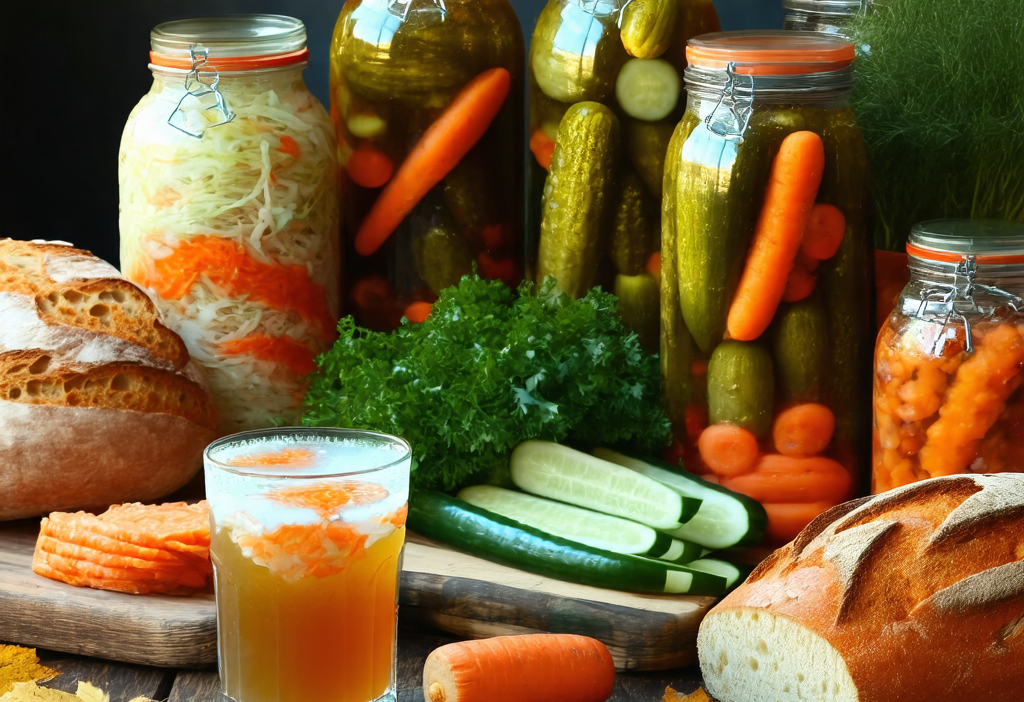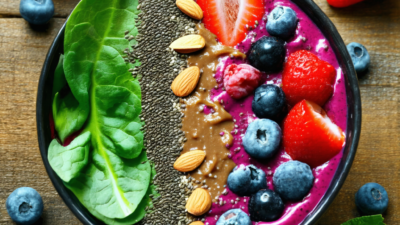Discover the Magic of Fermented Foods
Fermentation is more than just a trend—it’s a culinary revolution that’s been around for centuries. By harnessing the power of beneficial bacteria, you can transform simple ingredients into nutrient-packed, probiotic-rich foods that not only taste amazing but also boost your health and digestion.
Why Ferment Your Food?
- Improved Digestion: Fermented foods are easier to digest because the bacteria break down complex compounds, making nutrients more bioavailable.
- Better Gut Health: Probiotics support a healthy gut microbiome, which is linked to improved immune function and mental health.
- Longer Shelf Life: Fermentation acts as a natural preservation method, extending the life of your foods without the need for refrigeration.
- Cost-Effective: You can make large batches of fermented foods at home using affordable ingredients like cabbage, carrots, and cucumbers.
Getting Started: Essential Tools for Fermentation
Before you dive into the world of fermentation, there are a few tools you’ll need:
- Fermentation Jars: Glass jars with lids that allow for airflow (like Mason jars or specialized fermentation crocks). Avoid plastic to prevent chemical leaching.
- Weights: To keep vegetables submerged in brine, use glass weights or small plates weighted down with rocks.
- Thermometer: Fermentation is a temperature-sensitive process; aim for 68-72°F (20-22°C) for most ferments.
- Sea Salt: Use non-iodized salt to create the brine that inhibits harmful bacteria while allowing beneficial ones to thrive.
- Fresh Herbs and Spices: Garlic, ginger, dill, and caraway seeds add flavor and antimicrobial properties to your ferments.
Popular Fermented Foods You Can Make at Home
There’s no shortage of fermented foods you can create in your own kitchen. Here are some favorites:
- Sauerkraut: A classic German dish made from shredded cabbage, salt, and caraway seeds. It’s crunchy, tangy, and packed with probiotics.
- Kimchi: A Korean staple made from napa cabbage, radishes, and a spicy blend of gochugaru (red chili powder), garlic, and ginger. It’s fiery and flavorful.
- Pickles: Crunchy, briny pickles are a fermentation classic. Experiment with different vegetables like carrots, cucumbers, or even beets for unique flavors.
- Kombucha: A fizzy, slightly sweetened fermented tea that’s packed with probiotics and antioxidants. Customize the flavor by adding fruits or herbs during the second fermentation.
- Sourdough Bread: Made using a wild yeast starter (sourdough culture), this bread is more digestible than commercial yeast bread and has a complex, tangy flavor.
Tips for Successful Fermentation
Fermentation is a delicate balance of science and art. Here are some tips to ensure your ferments turn out perfectly:
- Keep It Clean: Sanitize all tools, jars, and utensils before use to avoid introducing unwanted bacteria or mold.
- Use High-Quality Salt: Non-iodized sea salt is essential for creating the right brine concentration. Too little salt can lead to spoilage, while too much can inhibit fermentation.
- Create an Anaerobic Environment: Fermentation requires an oxygen-free environment. Use weights to keep vegetables submerged and ensure jars are properly sealed.
- Monitor Temperature: Keep your ferments in a consistent, cool place away from direct sunlight or heat sources. Avoid opening the jar too often, as this can introduce air and disrupt the process.
- Taste As You Go: Fermentation times vary depending on temperature and salt concentration. Taste your ferments daily after the first few days to determine when they’re ready.
Pairing Fermented Foods with Your Meals
Fermented foods are incredibly versatile and can be incorporated into almost any meal:
- Add sauerkraut or kimchi to sandwiches, wraps, or salads for a tangy crunch.
- Use pickles as a condiment alongside grilled meats, fish, or tofu.
- Sip on kombucha as a refreshing alternative to soda or juice.
- Enjoy sourdough bread with avocado toast, hummus, or a simple butter and jam.
Troubleshooting Common Fermentation Issues
If something goes wrong during the fermentation process, don’t panic. Here are some common issues and how to resolve them:
- Mold Growth: If you see white or fuzzy mold on the surface of your ferment, scrape it off with a clean spoon. This is usually harmless, but make sure to keep your ferments submerged in brine to prevent future growth.
- Bitter Flavors: Over-salting can result in bitter-tasting ferments. Dilute the brine by adding fresh water and re-submerge the vegetables. Taste before consuming to ensure it’s palatable.
- Floating Vegetables: If your vegetables float to the surface, they’re not getting enough salt or may be exposed to oxygen. Add more salt or use weights to keep them submerged.
The Health Benefits of Fermented Foods
Regularly incorporating fermented foods into your diet can have a profound impact on your overall health:
- Improved Digestion: The probiotics in fermented foods help break down food more efficiently, reducing bloating, gas, and constipation.
- Stronger Immune System: A healthy gut microbiome is essential for a strong immune response. Fermented foods can help you fight off colds and infections more effectively.
- Better Mental Health: The gut-brain axis means that your digestive health directly impacts your mental well-being. Eating fermented foods has been linked to reduced anxiety and depression symptoms.
- Lower Risk of Chronic Diseases: Fermented foods are rich in antioxidants and anti-inflammatory compounds, which can help protect against conditions like heart disease, diabetes, and certain cancers.
Conclusion: Start Your Fermentation Journey Today
Fermentation is a simple yet powerful way to enhance your diet and overall health. With just a few basic tools and some patience, you can create delicious, probiotic-rich foods right in your own kitchen. Whether you’re making sauerkraut, kimchi, pickles, or kombucha, the process is deeply rewarding—and the results are nothing short of magical.
So why wait? Start experimenting with fermentation today and unlock a whole new world of flavor and health benefits. Your gut (and taste buds) will thank you!





